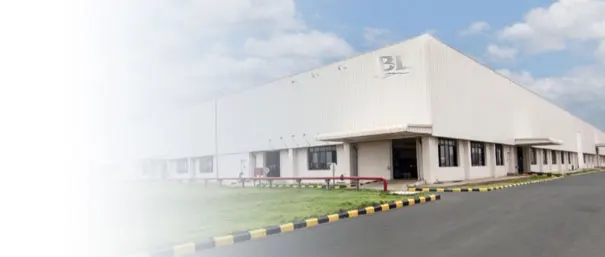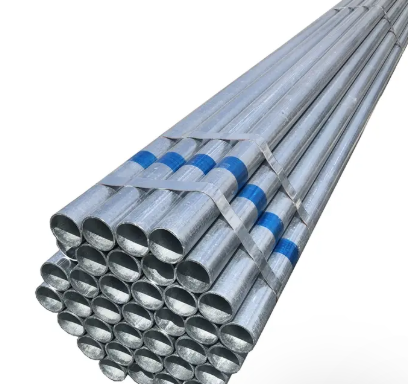Hot-dip galvanizing is one of the most reliable and cost-effective surface protection methods for steel pipes used in construction, infrastructure, water transmission, power, and manufacturing. By immersing properly prepared steel into molten zinc, the process creates a series of zinc–iron alloy layers topped with pure zinc that form a metallurgically bonded barrier. This barrier protects against uniform corrosion, pitting, and abrasion in harsh outdoor or industrial environments, often extending the service life of steel pipes well beyond 25–50 years depending on exposure conditions. For engineering teams and procurement managers seeking predictable lifecycle cost and low maintenance, hot-dip galvanizing is a proven solution.


Understanding the Hot-Dip Galvanizing Process for Steel Pipes
The hot-dip galvanizing workflow is defined by precise surface preparation, controlled immersion in molten zinc, and verification of coating integrity. Each step directly influences coating adhesion, thickness, and long-term performance. Below is a concise overview of the key phases commonly used for steel pipe products, including structural rounds, water service tubes, and mechanical pipe:
- Degreasing and alkaline cleaning: Remove oils, rolling emulsions, and organic soils that inhibit wetting. Clean surfaces improve fluxing and coating uniformity along the pipe interior (if processed) and exterior.
- Rinsing: Thorough water rinses minimize carryover, prevent contamination, and ensure consistent chemical reactions in subsequent baths.
- Acid pickling (typically HCl): Dissolves oxides and mill scale to expose reactive steel. Correct acid strength, temperature, and dwell time are essential to avoid under- or over-pickling that can affect coating smoothness.
- Rinsing after pickling: Removes acid residues, protecting the flux bath stability and minimizing ash formation during galvanizing.
- Fluxing (usually Zn–NH4Cl): Flux promotes wetting, prevents re-oxidation before immersion, and encourages uniform zinc flow, especially critical for threaded ends and pipe seams.
- Drying/preheat: Drives off moisture to reduce spatter and ash, resulting in smooth, adherent coatings and improved lengthwise uniformity on long pipe sections.
- Galvanizing immersion: Pipes are immersed in molten zinc (typically ~445–465°C). Zinc reacts with iron to form intermetallic layers (Gamma, Delta, Zeta) covered by Eta (pure zinc). The immersion angle, immersion time, and bath chemistry influence coating thickness and internal coating quality.
- Withdrawal, draining, and spinning (if applicable): Controlled withdrawal enables optimal zinc drainage and thickness uniformity. For shorter pipe fittings, centrifuging/spinning removes excess zinc, improving dimensional control at threads.
- Cooling and passivation: Air or water quenching stabilizes the coating. Optional passivation helps reduce early-stage white rust during storage and transport.
- Inspection and testing: Visual checks, thickness measurement (magnetic or gravimetric), adhesion checks, and continuity tests confirm compliance with standards such as ISO 1461, ASTM A123/A153, or ISO 10684 for fasteners and accessories.
Microstructure and Protective Mechanisms
The protective performance of hot-dip galvanizing comes from a dual mechanism: a physical barrier and sacrificial cathodic protection. The intermetallic layers formed during immersion are metallurgically bonded to the steel, providing superior adhesion compared with paint or mechanically bonded coatings. The top pure-zinc layer (Eta) resists damage and weathering while also sacrificing itself preferentially to protect exposed steel at cut edges, threads, or minor scratches. In marine and industrial atmospheres, the zinc surface gradually forms stable corrosion products (zinc oxides and carbonates) that further slow oxygen and moisture ingress.
Advantages for Long-Lasting Corrosion Protection
- Extended service life: Depending on environment, galvanized steel pipes often achieve decades of protection with minimal maintenance, supporting low total cost of ownership.
- Predictable performance: Coating thickness correlates with time-to-first-maintenance; standards provide measurable targets for design and warranty planning.
- Full-coverage protection: Internal and external surfaces can be coated when process and design allow; sacrificial behavior protects small defects and cut edges.
- Mechanical robustness: Metallurgical bonding and hard intermetallic layers provide excellent abrasion and impact resistance during handling, installation, and service.
- Compatibility with painting: Duplex systems (galvanizing plus paint or powder coat) further extend life and enable color coding or branding.
Typical Coating Thickness and Service Life Guidance
Coating thickness on hot-dip galvanized pipes depends on base steel chemistry, surface condition, immersion time, and post-drainage. For structural or standard pipe sizes, typical mean thickness ranges from approximately 55 μm to 100+ μm, with heavier sections tending toward thicker layers. The table below provides reference data for common environments and indicative maintenance intervals. Always verify with project-specific standards and exposure assessments.
| Environment | Typical Coating (μm) | Indicative Time to First Maintenance | Notes |
|---|---|---|---|
| Rural/low pollution | 70–100+ | 30–60 years | Slow zinc loss; minimal chlorides/SO2 |
| Urban/industrial | 70–100 | 20–45 years | Variable SOx/NOx; check microclimate |
| Coastal/marine (sheltered) | 85–120 | 15–35 years | Salt deposition; maintenance planning advised |
| Severe marine/industrial (offshore zones) | 100–140+ | 10–25 years | Consider duplex system for extended life |
In critical applications such as fire protection piping, coastal piling, or chemical handling systems, designers often specify either thicker galvanizing by process control or duplex coatings to enhance durability, aesthetic consistency, and identification.
Key Quality Controls and Standards
Reputable manufacturers and galvanizers follow international standards to ensure consistency and traceability. Dimensional checks confirm roundness, straightness, and thread gauge (if applicable). Coating thickness is verified using calibrated magnetic gauges, while adhesion is assessed by handling and optional tests. Surface continuity and drainage integrity at pipe ends and threads are carefully inspected to ensure reliable assembly on site.
- ISO 1461 for hot-dip galvanized coatings on fabricated iron and steel products
- ASTM A123/A153 for structural steel and hardware
- ASTM A53/A795 and related specifications for steel pipe product requirements
Applications and Design Considerations
Galvanized steel pipes are widely used across building frameworks, guard rails, utility conduits, fence systems, agricultural irrigation, telecom masts, and HVAC. For pressurized fluid systems, internal coating and cleanliness standards must be considered. Venting and drainage holes are essential for safe galvanizing of closed sections, allowing complete zinc flow and preventing pressure build-up. Designers should also allow adequate tolerances for coating thickness on threads and select compatible sealants or gaskets that do not accelerate zinc corrosion.
Where appearance is critical, post-galvanizing finishing such as passivation, buffing, or duplex coatings can improve uniformity and gloss. In coastal projects, specifying slightly higher minimum coating thickness and routine rinse maintenance can significantly extend life, especially for splash zones.
Sample Technical Parameters for Galvanized Steel Pipes
| Parameter | Typical Range | Notes |
|---|---|---|
| Base steel grades | Q235/Q345, ASTM A53/A500, EN S235/S355 | Chemistry influences coating growth kinetics |
| OD range | ∼ 1/2″ to 24″+ | Larger diameters require careful handling/fixtures |
| Wall thickness | SCH 10 to SCH 80+ (or metric equivalents) | Affects thermal mass and coating thickness |
| Coating thickness | 55–140 μm typical | Higher for aggressive environments or duplex |
| Zinc bath | ~445–465°C; Zn with controlled Al, Ni, Bi | Stabilizes coating, reduces ash and dross |
| Standards | ISO 1461, ASTM A123/A153; ASTM A53/A795 | Project-specific QA/QC plans recommended |
These ranges are indicative. Final specifications should be selected based on application pressure ratings, structural requirements, and environmental exposure class.
Why Partner with BaoLi Iron & Steel Co., Ltd
BaoLi Iron & Steel Co., Ltd is a China-based, quality-driven steel manufacturer supplying a complete portfolio of stainless, carbon, and galvanized products—plates, wires, pipes, bars, and coils—to projects worldwide. We combine manufacturing breadth with application expertise to help clients select the right steel grade, geometry, and surface protection for their performance targets. Our team provides end-to-end technical support, from design optimization and standards compliance to logistics and contract management, pursuing a 100% customer satisfaction philosophy.
For galvanized steel pipes, we offer flexible sizing, custom wall thickness, and controlled coating specifications that align with ISO, ASTM, or project-based requirements. Whether you need high-volume deliveries for infrastructure programs or tailored lots for specialized manufacturing, our quality system ensures consistent execution and reliable lead times.
Selecting the Right Galvanized Pipe Product
Choosing between pre-galvanized and post-fabrication hot-dip galvanized pipes depends on fabrication sequence, weld integrity, and target coating thickness. For complex assemblies, post-galvanizing ensures complete coverage of welds and cut areas. Where field cutting is unavoidable, cold galvanizing repair compounds can be used on exposed edges, but lifecycle performance is generally best with factory-controlled hot-dip processes and proper joint design.
Explore our product range to match your specifications and compliance needs. For example, you can review our galvanized steel pipe portfolio and technical options here:
galvanized steel pipes
and here:
galvanized steel pipe catalog.
Implementation Tips for Project Success
- Define coating thickness targets early and reference applicable standards in RFQs and contracts.
- Design vent/drain holes for closed sections; coordinate with the galvanizer’s handling fixtures.
- Control thread tolerances and specify centrifuging when threaded fittings require precise engagement.
- For coastal or chemical exposure, evaluate duplex coatings and plan periodic inspection intervals.
- Document inspection points—coating thickness, adhesion, visual continuity—and ensure calibrated gauges.
Ready to specify galvanized steel pipes for long-lasting corrosion protection?
Contact BaoLi Iron & Steel Co., Ltd for customized dimensions, coating targets, and technical support. Our team will help you optimize cost and performance across design, fabrication, and delivery—backed by rigorous quality control and global service capability.



